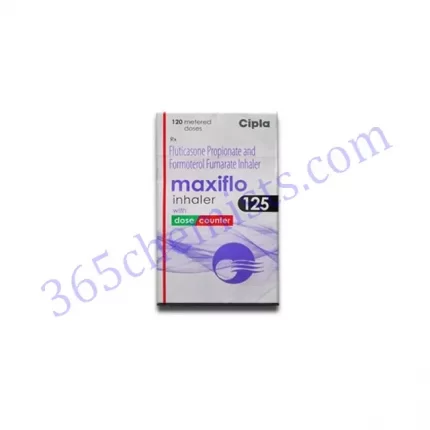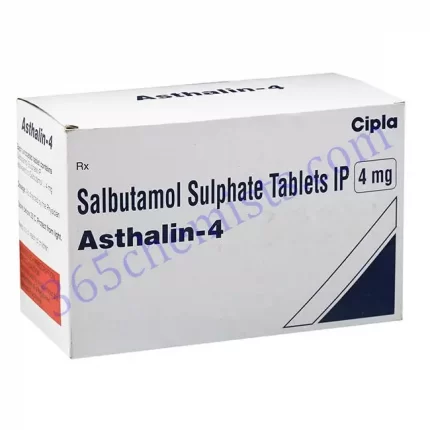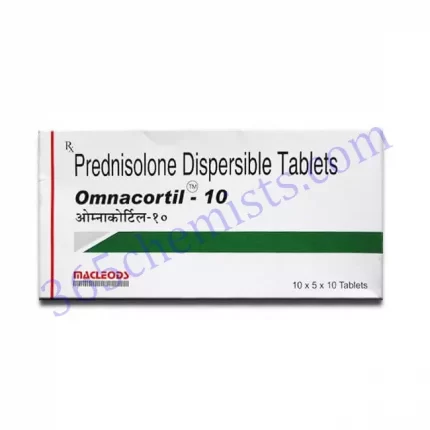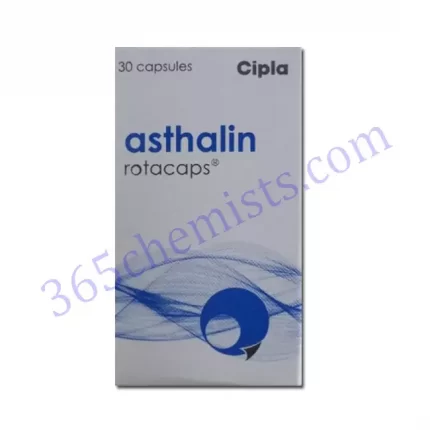Maxiflo Inhaler (Formoterol 6mcg/Fluticasone propionate 250mcg):
A medication that is commonly prescribed for the treatment and management of asthma is called Maxiflo Inhaler. This medication contains a combination of formoterol (6 mcg) and fluticasone propionate (250 mcg). This combination inhaler combines the benefits of a long-acting bronchodilator and an inhaled corticosteroid, working together to provide effective control of asthma symptoms. The bronchodilator helps open airways while the corticosteroid reduces inflammation. In the following in-depth analysis, we will investigate the many facets of the Maxiflo Inhaler, including its applications, recommended dosage, potential adverse effects, and safety precautions.
Uses of Maxiflo Inhaler
The Maxiflo Inhaler is typically employed for the primary purpose of long-term asthma management in patients who are over the age of 12. Asthma is a chronic respiratory condition that is characterised by inflammation and narrowing of the airways. This inflammation and narrowing of the airways leads to symptoms such as wheezing, shortness of breath, and coughing. Asthma can also be triggered by allergies. Both bronchodilation (widening of the airways) and anti-inflammatory effects are provided by the combination of formoterol and fluticasone propionate in the Maxiflo Inhaler. These effects work together to help reduce inflammation in the airways and improve asthma control. Asthmatic patients experience fewer symptoms as a consequence of this, and they see improvements in their lung function.
Dosage and Administration
It is possible for the recommended dosage of Maxiflo Inhaler to change depending on the severity of the individual’s asthma and how well they respond to treatment. It is essential to take the medication in accordance with the dosing instructions that have been provided by a qualified medical professional or those that are printed on the product label. In most cases, the recommended dose of Maxiflo Inhaler is two inhalations, twice daily, with a minimum of 12 hours in between doses. Before each use, the inhaler should be vigorously shaken, and the person taking the medication should exhale completely before taking the medication by mouth. It is critical to gargle with water after each use in order to reduce the likelihood of developing oral candidiasis. Please speak with a healthcare provider for individualised recommendations regarding dosage.
Related Product
Maxiflo Forte Rotacaps
Maxiflo 125mcg Inhaler
Maxiflo Inhaler
Maxiflo Rotacaps 100
Maxiflo Rotacaps 250
Possible Side Effects
Although the Maxiflo Inhaler is generally well tolerated, there is a possibility that it could cause certain adverse effects in certain people. Headaches, hoarseness, irritated throats, and oral candidiasis (thrush) are among the most frequently experienced adverse reactions. Rinsing the mouth out with water after each use can help reduce the severity of these side effects, which are typically mild and only temporary. It is strongly recommended that you visit a doctor in the event that any of these unwanted effects continue or become worse. In extremely unusual circumstances, the Maxiflo Inhaler has been known to produce life-threatening allergic reactions. Rash, itching, swelling, extreme dizziness, and difficulty breathing are some of the symptoms that may accompany an allergic reaction. In the event that any of these symptoms manifest themselves, it is imperative that prompt medical attention be sought.
Precautions and Safety Considerations
It is imperative that any pre-existing medical conditions, allergies, or medications that are currently being taken be disclosed to the healthcare provider before beginning treatment with the Maxiflo Inhaler. The healthcare professional can more accurately determine whether or not this medication is appropriate for the individual by using this information. In addition, there are a few safety measures that need to be taken in order to make sure that the Maxiflo Inhaler is used correctly and without incident:
- Pregnancy and breastfeeding: Before using the Maxiflo Inhaler during pregnancy or while breastfeeding, a discussion with a qualified medical professional is strongly recommended. They are able to offer direction regarding the potential risks and benefits, taking into consideration the individual’s particular circumstance.
- There is a possibility that using a Maxiflo Inhaler will increase the likelihood of getting a respiratory infection. It is critical to engage in proper practises of respiratory hygiene and to seek medical attention in the event that symptoms of an infection manifest.
- Glaucoma and cataracts are two eye conditions that may be made more likely by using inhaled corticosteroids for a prolonged period of time. One example of such a medication is fluticasone propionate. It is recommended that people who use the Maxiflo Inhaler get their eyes checked on a regular basis.
- Other medications: Ensure that the healthcare provider is aware of any and all medications, whether they be prescribed or over-the-counter, as well as any herbal supplements that are being taken. There is a possibility that the effectiveness of Maxiflo Inhaler could be diminished or that the risk of experiencing side effects could be increased if you take certain other medications at the same time.
Conclusion
An effective medication for the treatment of asthma is the Maxiflo Inhaler, which combines the active ingredients formoterol 6 mcg and fluticasone propionate 250 mcg in a single dose. It does this by having effects that are both bronchodilatory and anti-inflammatory, which helps to improve control of asthma and reduce symptoms. It is absolutely necessary to strictly adhere to the dosages that have been prescribed and the directions given by a medical professional for use that is both safe and effective. Even though most people only experience mild discomfort that goes away quickly, it is important to let a doctor know about any symptoms that continue or become more severe right away. The use of the Maxiflo Inhaler can significantly contribute to the management of asthma and improve both an individual’s respiratory health and their overall well-being, provided that the individual’s specific circumstances are taken into account and the necessary precautions are taken.












